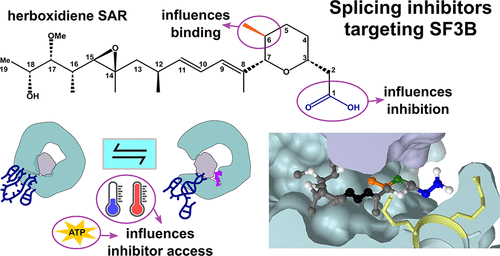Melissa Jurica
| Professor of MCD Biology B.S., Montana State University Ph.D., University of Washington/FHCRC Postdoctorate, Brandeis University |
Structural and Functional Analysis of Spliceosomes
Our long-term research goal is to build a mechanistic model of pre-mRNA splicing by the spliceosome. Splicing is a fundamental step of human gene expression, and abnormal splicing underlies many diseases including cancers. The spliceosome identifies and removes intron sequences that interrupt gene transcripts to generate functional messenger RNAs. Spliceosomes assemble from five “snurps” (U-rich small nuclear ribonucleoproteins) and dozens of proteins though a coordinated series of complicated rearrangements, which we aim to characterize in detail using the tools of biochemistry and structural biology.
We are also interested in small molecules that interfere with the spliceosome. We characterized natural products that potently inhibit cancer cell growth by targeting the SF3B subunit of the spliceosome and used high-throughput chemical screening to identify new spliceosome modulators. We will exploit these compounds as chemical probes of spliceosome function studied in test tubes and in cells.
Please follow this link to find our publications in the National Library of Medicine's PubMed database.

Figure from Herboxidiene Features That Mediate Conformation-Dependent SF3B1 Interactions to Inhibit Splicing. For details see Gamboa Lopez et al, (2021) ACS Chemical Biology. (https://pubs.acs.org/doi/10.1021/acschembio.0c00965)
